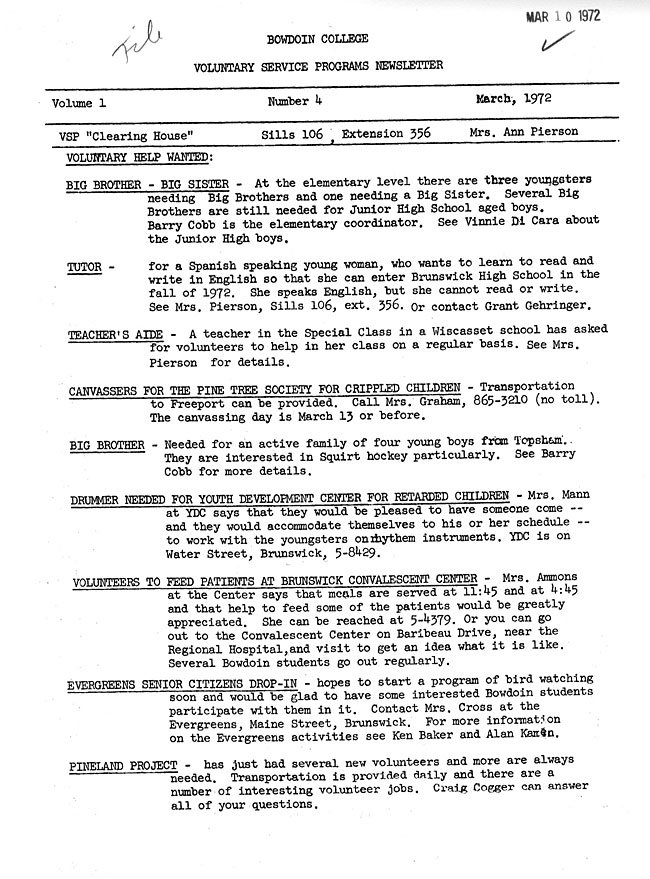An early perceived benefit of bringing women students to an all-male campus and becoming a coeducational institution was that women would have a “calming influence” on men. Whether this proved true or not is a matter of opinion but women students on Bowdoin’s campus did have an “organizational influence,” at least for the Voluntary Service Program, an early predecessor to today’s Mckeen Center.
Female students first began arriving on campus in 1969 as part of the 12-College Exchange Program. During the program’s first year, some women spoke to Professor of Education Paul Hazelton about the need for an easier, more visible path to participation in voluntary community service.
In 1970 Professor Hazelton, along with a group of male and female students formed the Voluntary Services Program Committee. The committee was established to coordinate student efforts in an organized manner and to provide accountability on behalf of the College for its student volunteers. Ann Pierson, then a secretary in the Education Department, became the Coordinator of the Voluntary Services Program. Ann’s position and the VSP allowed for a structured way in which students could pursue voluntary services. The newsletter [DocumentAG, 41] is something that VSP would have made available to students.
While volunteerism did occur at Bowdoin prior to the arrival of women, it was almost an “underground activity” recalls Anne Pierson. After the VSP was instituted, the number of students volunteering grew to at least a hundred within the first year and continuously after that.
Today, the “Common Good” is a phrase that most Bowdoin students are familiar with, either through the annual Common Good Day or through other ongoing projects sponsored by the Joseph Mckeen Center for the Common Good. A philosophy that has become such an integral part of Bowdoin College is rooted in the efforts of some of the first women students on campus. Ann Pierson who was both present during this shift and a part of it herself acknowledges these women’s efforts:
“It was the Bowdoin women in those early years who knew that without an effective system in place, volunteerism wouldn’t thrive on campus. They were eager for that to happen and they pushed for action. Before co-education, a few men students sought out opportunities on their own, of course. But it was the collaborative effort, initiated by women that made the difference.”
